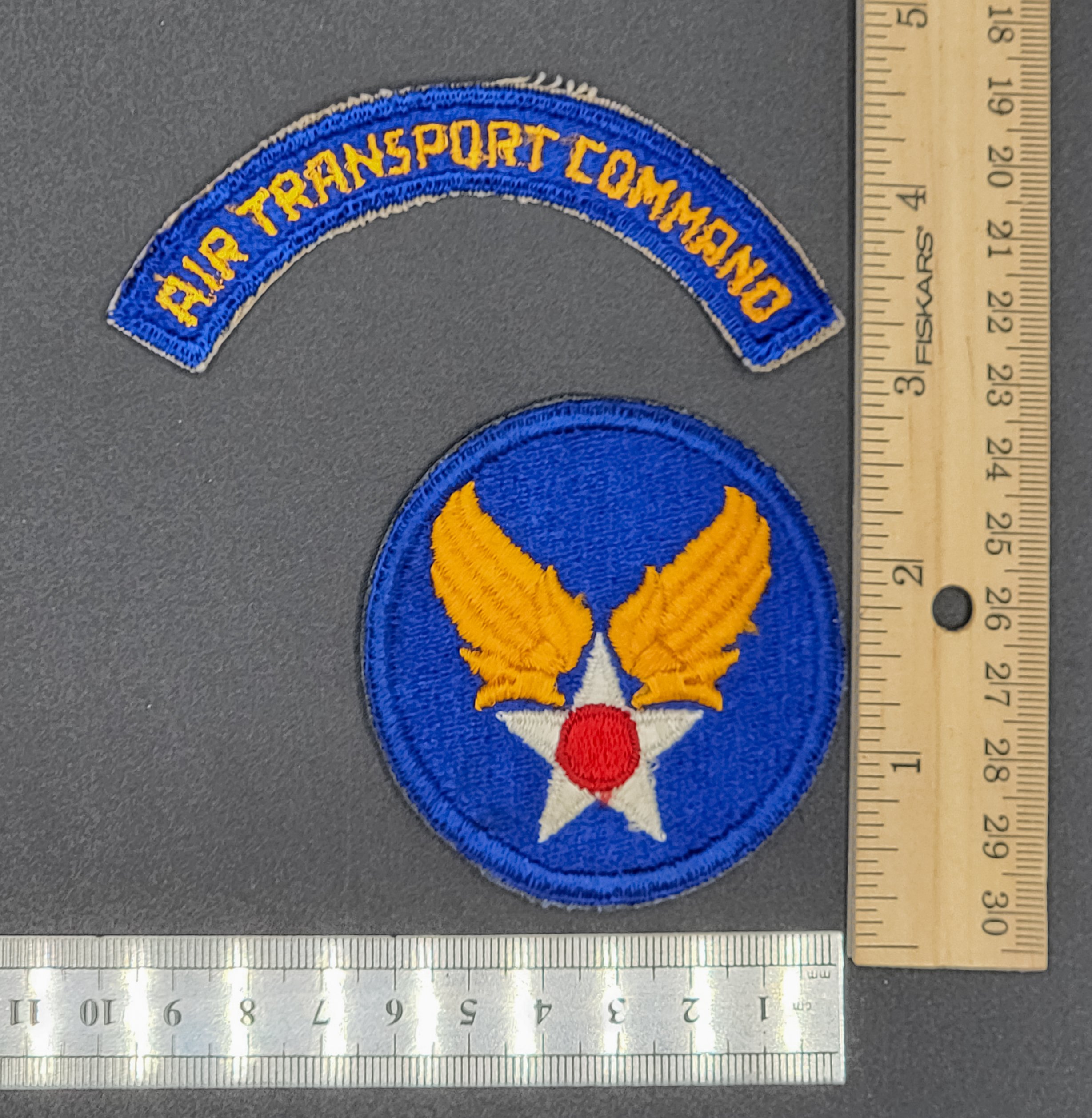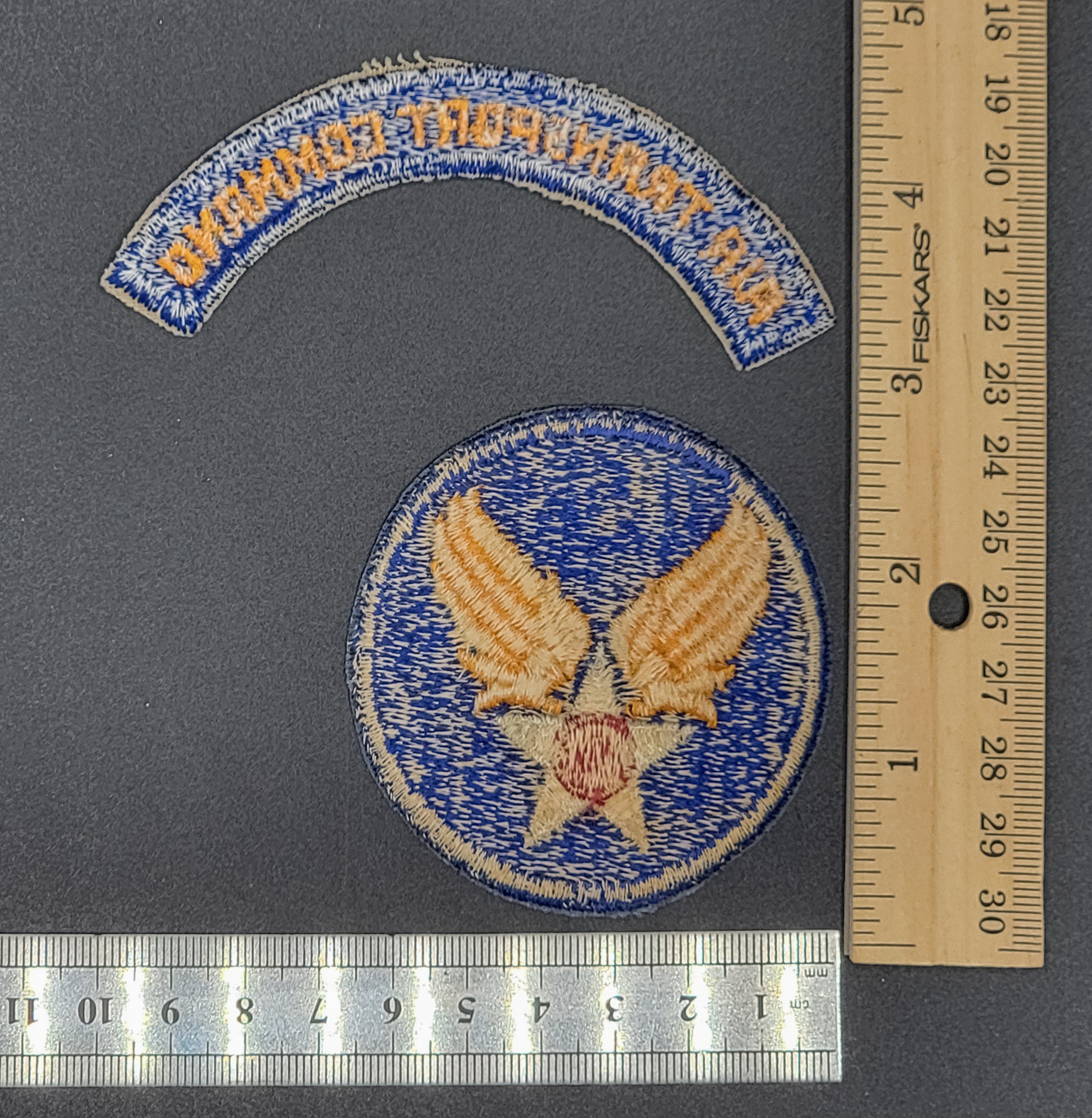USAAF Air Transport Command
Air Transport Command (ATC) was a United States Air Force unit that was created during World War II as the strategic airlift component of the United States Army Air Forces.
It had two main missions, the first being the delivery of supplies and equipment between the United States and the overseas combat theaters; the second was the ferrying of aircraft from the manufacturing plants in the United States to where they were needed for training or for operational use in combat. ATC also operated a worldwide air transportation system for military personnel.
With the passage of the Lend-Lease Act in March 1941 the United States stated its intention to assist the British in its war efforts and was a statement of the desire of Congress and the people of the United States to that effect. With that clear intention, the doors were opened for larger numbers of aircraft to be sent to the Royal Air Force to defend Great Britain. It was also clear that the pioneering efforts of the British would have to be expanded to accommodate the increased number of aircraft. However, the United States was not a belligerent nation and it was also a period of extreme diplomatic delicacy, when aircraft purchased by the British had to be literally pushed across the US-Canada border in order to protect the neutrality of the United States.
These shipments to the British caused a shortage in the United States of multi-engine aircraft in particular. Air Corps units were in need of training in long-range navigation, weather and radio-flying that a coast-to-coast ferrying service would give them in the latest models of aircraft. On 12 May 1941 the Office of the Chief of Air Corps (OCAC) was notified by the War Department that he was authorized for training purposes to have military pilots conduct cross-country flights in aircraft destined for use by the British Government for training purposes.
On 12 April 1941 plans were presented to the OCAC for the construction of a landing field on the west coast of Greenland for the staging of aircraft via Newfoundland, Greenland and Iceland to the United Kingdom. This would make possible the ferrying of medium and light bombers across the North Atlantic Ocean.
Air Transport Command (ATC) was a United States Air Force unit that was created during World War II as the strategic airlift component of the United States Army Air Forces.
It had two main missions, the first being the delivery of supplies and equipment between the United States and the overseas combat theaters; the second was the ferrying of aircraft from the manufacturing plants in the United States to where they were needed for training or for operational use in combat. ATC also operated a worldwide air transportation system for military personnel.
With the passage of the Lend-Lease Act in March 1941 the United States stated its intention to assist the British in its war efforts and was a statement of the desire of Congress and the people of the United States to that effect. With that clear intention, the doors were opened for larger numbers of aircraft to be sent to the Royal Air Force to defend Great Britain. It was also clear that the pioneering efforts of the British would have to be expanded to accommodate the increased number of aircraft. However, the United States was not a belligerent nation and it was also a period of extreme diplomatic delicacy, when aircraft purchased by the British had to be literally pushed across the US-Canada border in order to protect the neutrality of the United States.
These shipments to the British caused a shortage in the United States of multi-engine aircraft in particular. Air Corps units were in need of training in long-range navigation, weather and radio-flying that a coast-to-coast ferrying service would give them in the latest models of aircraft. On 12 May 1941 the Office of the Chief of Air Corps (OCAC) was notified by the War Department that he was authorized for training purposes to have military pilots conduct cross-country flights in aircraft destined for use by the British Government for training purposes.
On 12 April 1941 plans were presented to the OCAC for the construction of a landing field on the west coast of Greenland for the staging of aircraft via Newfoundland, Greenland and Iceland to the United Kingdom. This would make possible the ferrying of medium and light bombers across the North Atlantic Ocean.
Air Transport Command (ATC) was a United States Air Force unit that was created during World War II as the strategic airlift component of the United States Army Air Forces.
It had two main missions, the first being the delivery of supplies and equipment between the United States and the overseas combat theaters; the second was the ferrying of aircraft from the manufacturing plants in the United States to where they were needed for training or for operational use in combat. ATC also operated a worldwide air transportation system for military personnel.
With the passage of the Lend-Lease Act in March 1941 the United States stated its intention to assist the British in its war efforts and was a statement of the desire of Congress and the people of the United States to that effect. With that clear intention, the doors were opened for larger numbers of aircraft to be sent to the Royal Air Force to defend Great Britain. It was also clear that the pioneering efforts of the British would have to be expanded to accommodate the increased number of aircraft. However, the United States was not a belligerent nation and it was also a period of extreme diplomatic delicacy, when aircraft purchased by the British had to be literally pushed across the US-Canada border in order to protect the neutrality of the United States.
These shipments to the British caused a shortage in the United States of multi-engine aircraft in particular. Air Corps units were in need of training in long-range navigation, weather and radio-flying that a coast-to-coast ferrying service would give them in the latest models of aircraft. On 12 May 1941 the Office of the Chief of Air Corps (OCAC) was notified by the War Department that he was authorized for training purposes to have military pilots conduct cross-country flights in aircraft destined for use by the British Government for training purposes.
On 12 April 1941 plans were presented to the OCAC for the construction of a landing field on the west coast of Greenland for the staging of aircraft via Newfoundland, Greenland and Iceland to the United Kingdom. This would make possible the ferrying of medium and light bombers across the North Atlantic Ocean.

